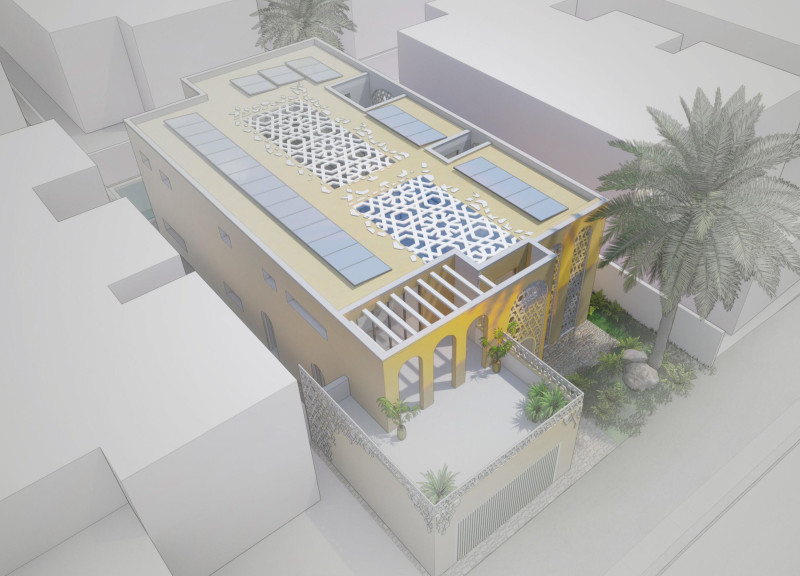5 key facts about this project
The design embodies a careful consideration of space, with an emphasis on creating areas that encourage social interactions while ensuring individual privacy. The layout of the project is organized to facilitate movement and accessibility, promoting the idea of an open and welcoming environment. Generous public spaces are thoughtfully integrated into the design, offering areas for gathering, events, and leisure, which play a pivotal role in the social fabric of the community. These spaces are designed to accommodate a diverse range of activities, thereby enriching the daily experiences of its users.
The architectural vocabulary of the project reflects a blend of modern materials and traditional elements, resulting in a harmonious architectural expression. The use of reinforced concrete forms the structural backbone, ensuring durability and safety, while expansive glass facades contribute to transparency and visual connectivity with the surroundings. This decision allows for ample natural light to flood the interior spaces, fostering an uplifting atmosphere that promotes well-being among residents and visitors alike. Additionally, the inclusion of sustainable timber adds a layer of warmth and a tactile quality that contrasts with the sleekness of the glass and concrete, illustrating a commitment to thoughtful material selection.
Details that define this project extend beyond mere aesthetics. The inclusion of green roofs serves a dual function—offering insulation benefits while providing accessible outdoor spaces for residents. These landscaped areas not only contribute to the building’s ecological footprint but also create lush environments for relaxation and enjoyment. The integration of native plant species emphasizes a commitment to biodiversity, enriching the local ecosystem while minimizing maintenance requirements.
A distinctive approach adopted by the architects is the use of modular design principles, allowing for adaptability and flexibility in space usage. This aspect enables the building to accommodate changing needs over time, underscoring a forward-thinking mindset that is increasingly essential in contemporary architecture. The interiors are characterized by clever spatial arrangements that optimize functionality without compromising on aesthetics. The design incorporates movable partitions in various areas, allowing users to reconfigure spaces as needed, thus enhancing their versatility.
The project also emphasizes the importance of technological integration, with smart home features incorporated into residential units. This integration not only improves the living experience by enhancing convenience but also reflects a contemporary understanding of user needs in a technological age. Energy-efficient systems are thoughtfully embedded throughout the design, including solar panels and rainwater harvesting solutions, illustrating a commitment to sustainability and responsible resource usage.
Overall, this architectural project represents a meaningful contribution to the urban landscape, embodying principles of sustainability, community engagement, and adaptive design. It showcases how architecture can effectively respond to spatial challenges while promoting a sense of belonging and shared experience among its users. As the project continues to develop, it invites a deeper exploration of its architectural plans, sections, designs, and ideas, further illuminating the intricate relationships between space, community, and environment. Interested readers are encouraged to delve into the project presentation to gain a comprehensive understanding of its various dimensions and design philosophies.


 Marko Jovasevic,
Marko Jovasevic, 























